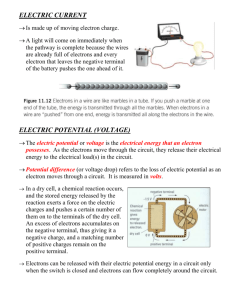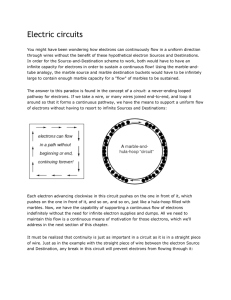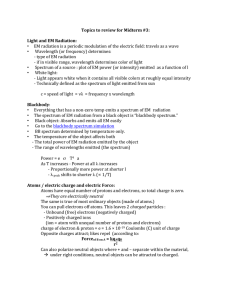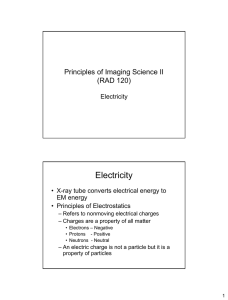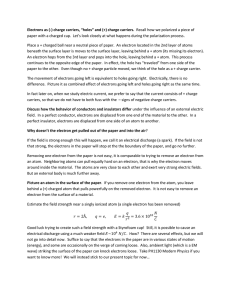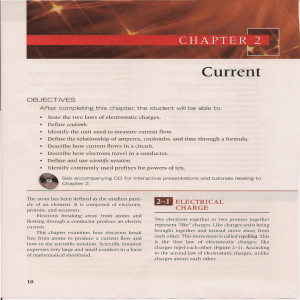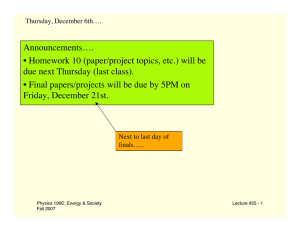Current Electricity What do we mean by Current?
advertisement
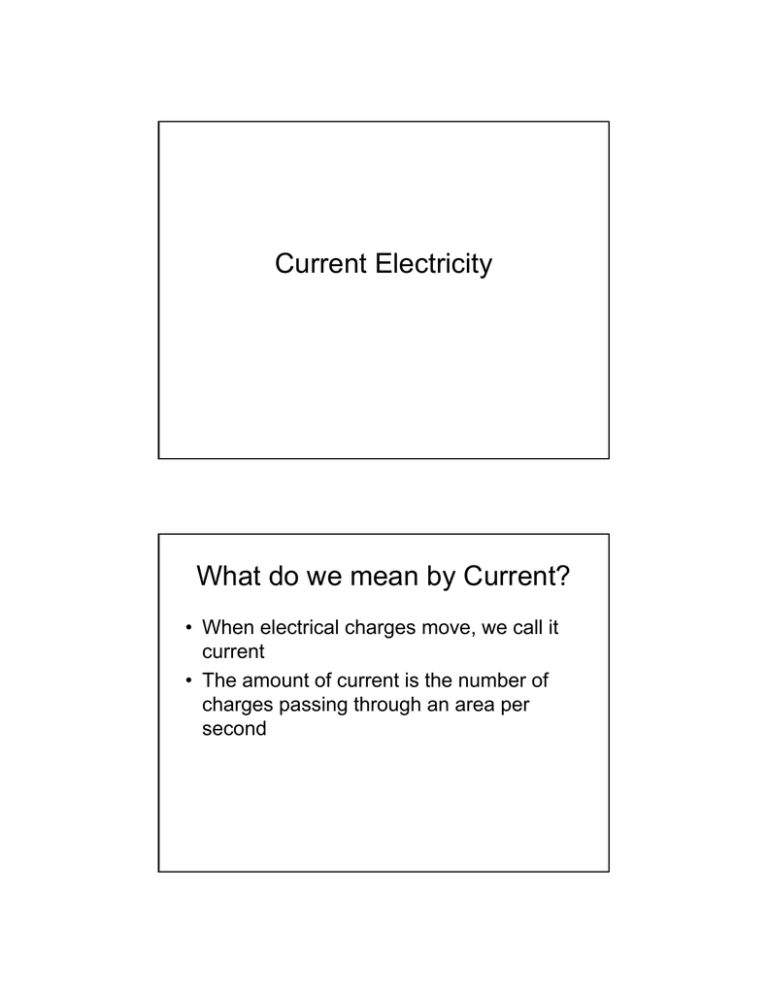
Current Electricity What do we mean by Current? • When electrical charges move, we call it current • The amount of current is the number of charges passing through an area per second Q I t I - current (amps, A) Q – charge (coulombs, C) t – time (seconds, s) • We know that the charges moving through an electrical circuit are electrons • Each electron has a charge of 1.6x10-19 C Example • An electrical appliance says that it uses a current of 3.0 A. How many electrons pass though the circuit in one second? Q t Q 3 .0 A 1s I Q 3. 0 C • But we wanted to know how many electrons number of electrons Q charge of 1 electron • One electron has a charge of 1.6x10-19 C • So… number of electrons 3.0 C 1.6 10-19 C number of electrons 1.9 1019 Electric Potential Difference • The energy per unit charge between two points along a conductor • Also referred to as voltage (V) E V Q V – potential difference, voltage (Volts, V) E – energy of the charges (Joules, J) Q – charge (Coulombs, C) Example • How much energy does each electron in a circuit have if the potential difference is 120 V? V 120 V E Q E 1.6 10 19 C E 1.9 10 17 J Sources of Electrical Energy • Chemical – Batteries • Photo – Solar cell • Electromagnetic – Generators • Thermoelectric – Thermocouple • Piezoelectric – microphones Resistance • In a conductor, some electrons are free to move but the rest of the atom is fixed • As the electrons move through the circuit they bump into the fixed atoms • Whenever an electron bumps into a fixed atom it loses energy as heat (and possibly light) • This is known as resistance • The amount of resistance depends on the type of material – Tungsten has a high resistance – Gold has a very low resistance • The amount of resistance also depends on temperature, the length and how big the conductor is • Resistance is measured in units called Ohms (Ω)
